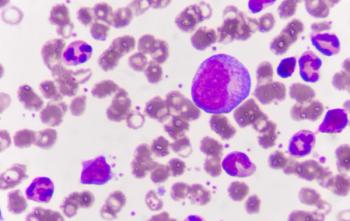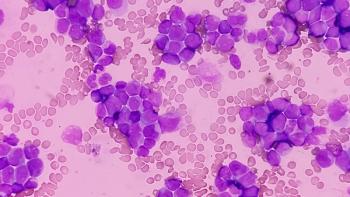
Preliminary Findings Show Tolerability of Carotuximab Combo in mCRPC
The combination of apalutamide to carotuximab showed early signs of tolerability in patients with metastatic castration-resistant prostate cancer.
The addition of carotuximab (ENV-105) to standard-of-care apalutamide (Erleada) appeared to be well tolerated in the first 10 patients with metastatic castration-resistant prostate cancer (mCRPC) dosed with the combination in an ongoing phase 2 trial (NCT05534646).1
Of note, dose-limiting toxicities and unexpected adverse effects (AEs) have not been observed. Treatment-related AEs were considered manageable with standard supportive care, with no reports of grade 3/4 AEs.
“The favorable safety profile observed in this phase 2 study is encouraging, as it validates our belief in [carotuximab’s] clinical potential and supports continued development in a patient population with
The randomized phase 2 trial aims to enroll a total of 100 patients and is actively enrolling patients with mCRPC at City of Hope in Duarte, California; Cedars-Sinai Medical Center in Los Angeles, California; and Huntsman Cancer Institute in Salt Lake City, Utah. Interim efficacy data from the study are expected to be reported in September 2025. Furthermore, Kairos Pharma aims to engage with regulatory agencies to discuss the potential for a phase 3 study based on the upcoming phase 2 data.
Delving Into the Phase 2 Study
Patients enrolled in the trial must be at least 18 years of age with a history of CRPC with rising prostate-specific antigen (PSA) levels during treatment with a contemporary androgen receptor signaling inhibitor (ARSI), including abiraterone (Zytiga), enzalutamide (Xtandi), and
Notably, patients are not included on the study if they have non–PSA-producing prostate cancer, have previously received apalutamide, have a prior malignancy requiring active anticancer therapy, have been previously exposed to carotuximab or any CD105-targeted antibody, have active bleeding or pathologic medical conditions that may lead to high bleeding risk, or have a known diagnosis of Osler-Weber-Rendu syndrome.
The safety lead-in portion of the trial included the first 10 enrolled patients, who received the combination of carotuximab and apalutamide. The study design explained that if this combination was deemed safe per the safety data, the phase 2 stage of the study would initiate. In the phase 2 stage, patients will be randomly assigned to receive either apalutamide monotherapy or apalutamide plus carotuximab. Those in the monotherapy arm are to receive apalutamide at a dose level of 240 mg daily on days 1 to 28 of every 28-day cycle and are permitted to cross over to the combination arm following disease progression. Patients in the experimental arm are to receive oral apalutamide at the same dose level as the monotherapy arm in combination with intravenous carotuximab at the following dosing schedule: 3 mg/kg (cycle 1, day 1), 7 mg/kg (cycle 1, day 4), 10 mg/kg (cycle 1, day 8), 10 mg/kg (cycle 1, day 15), 10 mg/kg (cycle 1, day 22), 15 mg/kg (cycle 2, day 1), 15 mg/kg (cycle 2, day 15), and 15 mg/kg (cycle 3+, day 1). After completion of cycle 2, patients will continue to receive carotuximab once every 4 weeks at the 15-mg/kg dose.
The primary end point of the study is radiographic progression-free survival (rPFS) among patients treated with apalutamide monotherapy or the combination of apalutamide and carotuximab per RECIST 1.1 and Prostate Cancer Working Group 3 (PCWG3) criteria. Secondary end points include the incidence of grade 3 or higher AEs related to the combination, overall radiographic response rate with the combination, the number of patients who benefit from the combination with prior resistance to apalutamide, ORR in the overall population, rPFS in the overall population, and biochemical PFS per PCWG3 criteria in the overall population.
References
- Kairos Pharma announces positive safety results from phase 2 trial of ENV-105 in advanced prostate cancer. News release. Kairos Pharma. July 15, 2025. Accessed July 15, 2025. https://investors.kairospharma.com/news-and-events/news-releases/news-details/2025/Kairos-Pharma-Announces-Positive-Safety-Results-from-Phase-2-Trial-of-ENV-105-in-Advanced-Prostate-Cancer/default.aspx
- Study of apalutamide with carotuximab in metastatic, castration-resistant prostate cancer. ClinicalTrials.gov. Updated June 5, 2025. Accessed July 15, 2025. https://clinicaltrials.gov/study/NCT05534646
Newsletter
Knowledge is power. Don’t miss the most recent breakthroughs in cancer care.
















































































